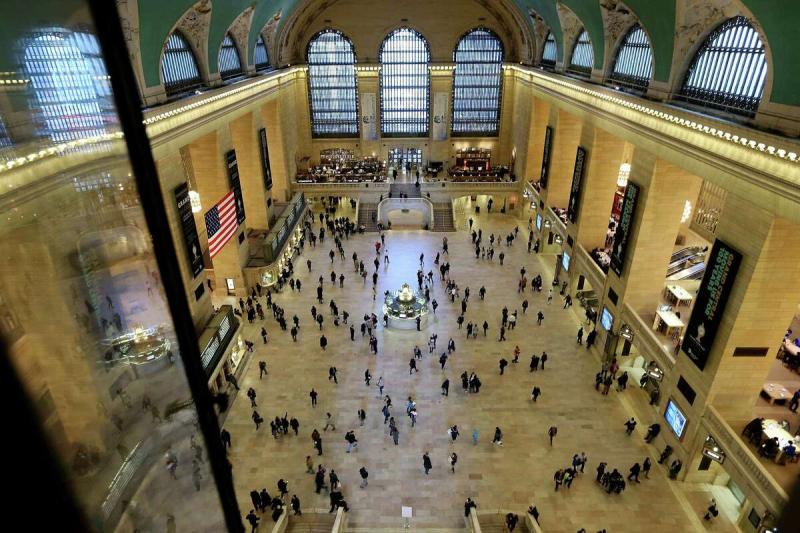Bring Back the Old Penn Station
By: James Gardner (WSJ)



The redevelopment of Penn Station is in the news again. Empire State Development Corporation, which oversees the governor's large capital investment projects, is scheduled to vote today on a plan to develop 10 new mixed-use towers around it, revenue from which would finance the reconstruction and possible expansion of the train station. The plan, which is opposed by organizations as varied as the Historic Districts Council, a preservation group, and Reinvent Albany, which advocates for transparency and accountability in state government, is a favorite project of Gov. Kathy Hochul. Meanwhile, she is soliciting design proposals for Penn Station itself.
But instead of merely revamping Penn, I have a bolder proposal: nothing less than rebuilding McKim, Mead & White’s old Penn Station of 1910, which, when torn down in 1963, launched the historic preservation movement throughout the country. Based on the second-century Baths of Caracalla in Rome, it was one of the noblest monuments of America’s Belle Époque, and its destruction—not to mention the odiousness of what replaced it, the present Madison Square Garden—has left a stain on New York. As the renowned architectural historian Vincent Scully observed, “Through Pennsylvania Station one entered the city like a god. . . . One scuttles in now like a rat.”
Rebuilding isn’t a new idea. In fact, there’s a website devoted to it— rebuildpennstation.org . The proposal hasn’t gotten much traction, possibly because it is apt to seem, if not insane, at least idiotic, and in any case impossible. In fact it is none of the above.
Its viability was brought home to me during a recent trip to Germany, specifically to Berlin, Potsdam and Dresden. Each of those cities was devastated by aerial bombardments during World War II, and if anything remained standing amid the rubble, it was torn down by the Communists who subsequently controlled East Germany. In some places—for instance, Berlin’s Königliches Schloss—a drab midcentury modernist structure of the same dimensions replaced the original, and for half a century that was all that the locals knew in that site.
But then, in the early years of the present century, the Germans had an inspired idea: They could rebuild the long-vanished palace and produce something essentially indistinguishable from what had once been there. Immediately there was resistance from architectural critics and historians. Advocates of a more modernist idiom assumed, incorrectly, that such an act would produce some reactionary and comically inept pastiche, along the lines of the worst excesses of postmodernism.
Instead, the result was so sensitive and accomplished that a pedestrian who passed the newly reconstituted building and had no prior knowledge would never imagine that anything else had ever stood in that place, going back hundreds of years. And while the interiors were indeed altered to accommodate contemporary uses and environmental concerns, such changes are common in older buildings throughout the world, without provoking the slightest controversy. The splendid new Moynihan Train Hall, inhabiting the shell of the old James A. Farley Building, previously the General Post Office Building, is but one eminent example. The White House is, in many respects, another.
In addition to Berlin’s Königliches Schloss, Potsdam’s Stadtschloss and Dresden’s Zwinger Palace (which was largely but not completely destroyed) have benefited from this process of re-creation. The reality of architecture, as an artistic and cultural act, is that it is a vast composite of abstract formal ideas—from window surrounds and dormers to stairways and colonnades—that are then reified in wood or stone or steel. As long as there are contemporary builders who can achieve a level of skill comparable to that of the original builders—and the Germans have proved that this is possible—then a building is well-nigh indestructible, if not immortal.
A curious psychological process accompanies such rebuilding campaigns. At first blush they are apt to seem foolish and impossible to pull off. This gives way to astonishment when the results of the rebuilding are actually seen and experienced firsthand. Finally, the re-created building is so fully reintegrated into its environment that, to the locals, it seems as if it had never gone away.
Some critics will insist that it would be far better to find some excellent contemporary design. There is something to that, assuming that such a design could be found. But given the city’s track record for both public and private development, there is no reason to be optimistic. And even if such a design were found, it would at best equal but could never surpass the excellence of McKim, Mead & White’s masterpiece.
In relatively short order, the reconstructed old Penn Station would resume the eminent place it held 60 years ago, becoming part of the landscape. The narrative of Manhattan that we have known for over half a century, that it destroyed the finest building it ever had in the name of progress, would be erased, exorcised. The old Penn Station would simply be there once again, admittedly after a protracted absence.
This would be far more than a reconstruction. It would be a resurrection.









